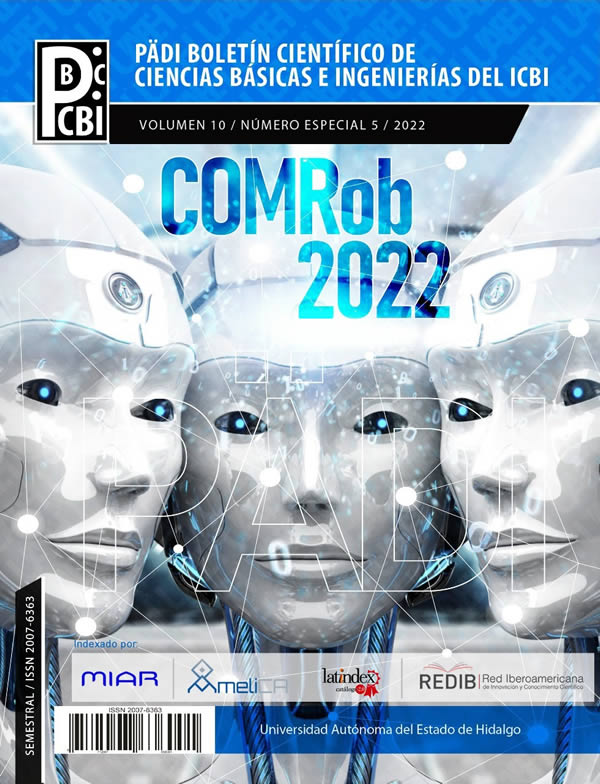Wheelchair assistive system with EMG
Abstract
In this technological development work, the design and construction of a device is presented which will operate a system of electric motors to support the movement of a wheelchair through the reading of signals by means of an electromyograph (EMG) in order to detect the effort made during displacement in a common wheelchair, the signal is conditioned in such a way that it detects only the effort made during this action, when closing the hand to hold the wheel and drive the rotation, without detecting movements such as simple muscle tension or normal arm movements. Considering that people with motor disabilities who use wheelchairs have to move for long distances and during the whole day, with this system the effort is reduced and it supports on paths with steep slopes when going up.
Downloads
References
Ahmed, S. F. et al.,(2018). Mobility assistance robot for disabled persons using electromyography (EMG) sensor. 2018 IEEE International Conference on Innovative Research and Development (ICIRD), 2018, pp. 1-5, doi: 10.1109/ICIRD.2018.8376304.LNCS Homepage, http://www.springer.com/lncs, last accessed 2016/11/21.
Altamirano, M.Á. & Revilla, E.F. (2017). Diseño y construcción del control de silla de ruedas motorizada basada en señales EEG para personas con severa discapacidad en el Hospital Regional de Lambayeque (Trabajo de Grado). Universidad Nacional Pedro Ruiz Gallo, Perú. http://repositorio.unprg.edu.pe/handle/UNPRG/1230
Durán Acevedo, C. M., & Jaimes Mogollón, A. L. (2013). Optimización y clasificación de señales EMG a través de métodos de reconocimiento de patrones. Iteckne, 10(1), 67-76. Retrieved May 21, 2021, from http://www.scielo.org.co/scielo.php?script=sci_arttext&pid =S1692-17982013000100009&lng=en&tlng=es.
Fernández Pascual, Á. (2011). The spinal cord: the cord of life. The story of a quadriplegic by traffic accident. Index de Enfermería, 20(3), 199-202. https://dx.doi.org/10.4321/S1132-12962011000200013
Gago Fernández, I., & Seco Calvo, J. (2010). Independencia funcional para el manejo autónomo de la silla de ruedas. A propósito de un caso. Fisioterapia, 32(1), 41–45.doi:10.1016/j.ft.2009.03.003
Instituto para la Integración al Desarrollo de las Personas con Discapacidad de la Ciudad de México (2016). Manual de normas técnicas de accesibilidad. Jefatura de Gobierno de la Ciudad de México
Küçükyıldız, G., Ocak, H., Şayli, O. & Karakaya, S. (2015). Real time control of a wheelchair based on EMG and Kinect for the disabled people, Medical Technologies National Conference (TIPTEKNO), 2015, pp. 1-4, doi: 10.1109/TIPTEKNO.2015.7374606.
Luengo, E. (2011) Silla de ruedas controlada por movimientos oculares [en línea]. Trabajo Final. Pontificia Universidad Católica Argentina. Facultad de Ciencias Fisicomatemáticas e Ingeniería, 2011. Disponible en: https://repositorio.uca.edu.ar/handle/123456789/11223
Paredes Robalino, E. A. (2019). Diseño e implementación de un sistema de control de la linealidad de la trayectoria de una silla de ruedas manejada mediante comandos de voz, para personas cuadripléjicas. 126 hojas. Quito : EPN.













